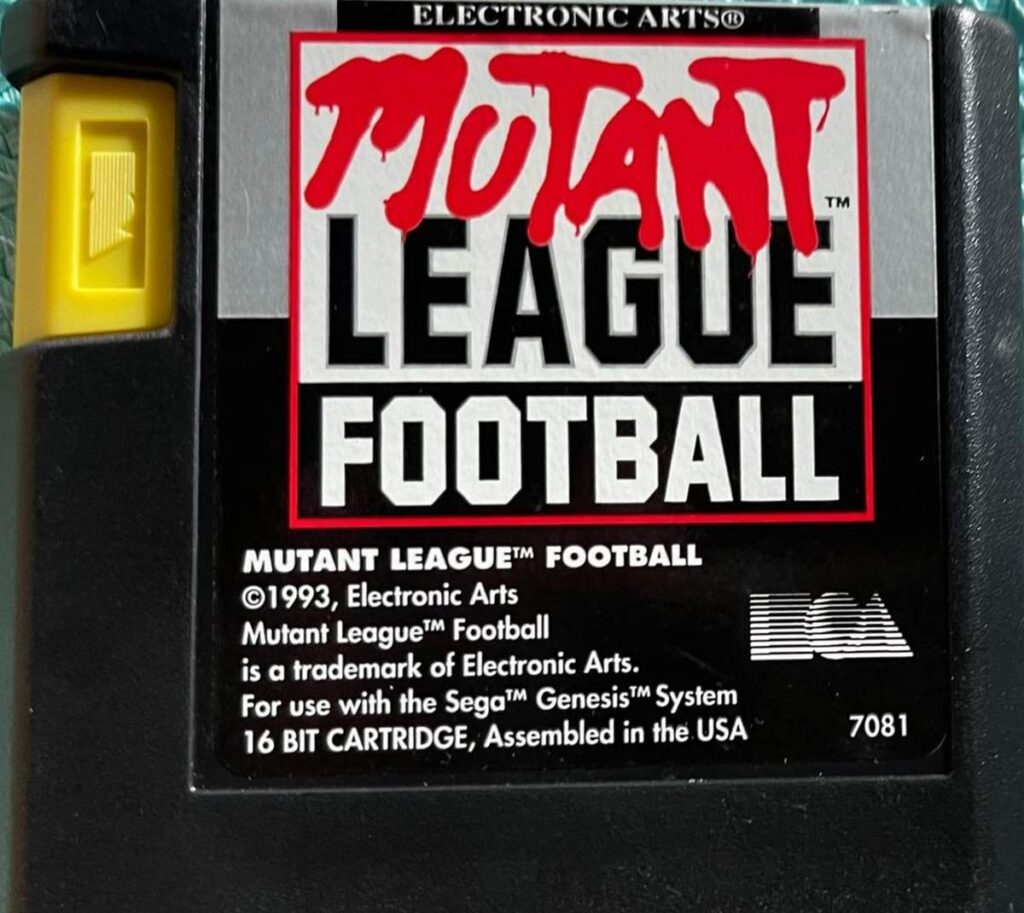Why do some Sega Genesis cartridges have a yellow tab? Was it invented for security reasons? Did they do it so you could have a better grip on the cartridge? Or was there a bigger explanation of why Sega had cartridges with a yellow tab?

The answer is a little more complex than it seems. It involves crazy license agreements, reverse engineering, and the freedom for developers to make and market the games they want. Read on for an interesting reason as to why some Sega Genesis cartridges have yellow tabs.
Background on the video game industry in the 80s
Back in the 80s, two big players were in the video game market. Nintendo had the NES that they released in 1983 and were dominating the home console market, and Sega was an up-and-coming console maker who was making waves with the Sega Master System and eventually released the Sega Genesis in 1988.
Electronic Arts, also known as EA, was a big game publisher in the 80s. Trip Hawkins founded EA around 1982 and most of their games were released on the PC. In 1988, Electronic Arts wanted to get a piece of the huge cartridge-based home console market and started to talk to Nintendo about getting their games to their consoles.
Licensing agreement woes
At the time Nintendo had the biggest market share, but Trip Hawkins was put off by Nintendo’s restrictive licensing for third-party developers. Nintendo’s policy for third-party developers was as follows:
- Buy an expensive dev kit from Nintendo
- Pay high royalty fees for each game sold
- Nintendo controls the production of the games
- And Nintendo approves what games make it to stores
This was a hard pill to swallow for EA. They were moving tons of games in the PC market and didn’t want to share their profits with Nintendo.
Now here is Sega coming along with the next great console, the Sega Mega Drive aka Sega Genesis. 16-bit graphics, improved sounds, more colors, and best of all for EA, it wasn’t Nintendo. Surely a new up-and-coming system would be eager to sign any and all third-party developers to get games on their new system right?
But unfortunately, EA was met with the same licensing agreements and restrictions that halted a deal with Nintendo. EA tried to negotiate for a year with Sega to come to a better agreement. But after months of failed negotiations, EA was essentially told if they wanted their games on Sega they would have to reverse engineer the Genesis.
Reverse Engineered

Well, that is exactly what EA did. They hired some engineers, got some Sega Genesis, and begin dissembling and reverse-engineered the Sega Genesis. All in the name of being able to put their software on Sega Genesis cartridges.
Now, most of you are probably thinking this wasn’t exactly legal. But if you remember during this same time period there was precedence for reverse engineering. Compaq had done the same thing with IBM to make “IBM Compatible” PCs. As long as EA didn’t use any of Sega’s proprietary code they could figure out how to make cartridges.
CES Show
After another year of work, EA had finally ported one of their most popular titles “Populous” to a Sega Genesis cartridge. They made plans to show what they did at a CES booth. But Trip Hawkins being the savvy CEO of a company decided to talk to Sega one more time and negotiate a deal.
Sega had caught wind of what EA had done by this time. They were absolutely horrified that EA was going to start signing deals with third-party developers and making their games on the Genesis and cutting Sega out completely.
After a short time Sega and EA came to a new deal, but this time the deal was favorable for EA. The new deal allowed EA to make as many titles as it wanted to, they could approve their own titles, EA would control manufacturing, and the royalty fees were more favorable.
But why the Yellow Tabs?

The yellow tab on the EA Sega Genesis cartridges was to differentiate the EA-made cartridges from the standard Sega-licensed cartridges. It was mostly for marketing and visibility. Just a few weeks after that CES and the agreement the yellow tab cartridges were hitting the shelves.
By the end of the year, EA released Madden football and it sold almost half a million copies. and today it is one of the biggest-selling franchises in the history of video games.
The yellow-tabbed cartridges represent more than just a marketing gimmick for EA. It represents a third-party developer standing up to the console makers and making them blink first.
Today this would be equivalent to EA reverse engineering an iPhone to figure out how to get their games on their phone without them being on the Apple Store.
The history behind the yellow-tabbed Sega cartridges is both interesting and controversial. If Sega would have pursued legal action there was a very good chance they could have stopped EA in its tracks. It also showed that there was a time that EA stood up for their developers and wanted everyone to enjoy the games they made.
But history would show that this reverse engineering not only helped EA become an even bigger video game company but helped Sega earn a foothold in the console race by having some of the best titles available on their console.
Sources:
– https://web.archive.org/web/20211116035017/http://bluetoad.com/display_article.php?id=773681
– https://arstechnica.com/gaming/2008/08/the-story-of-ea-and-the-pirate-genesis-development-kit/
– https://youtu.be/x0qe1FNqtCo
Image Credit:
– Sonic Cartridge Photo by Adam Mills on Unsplash
– Sega Console Photo by Joshua Doherty on Unsplash
